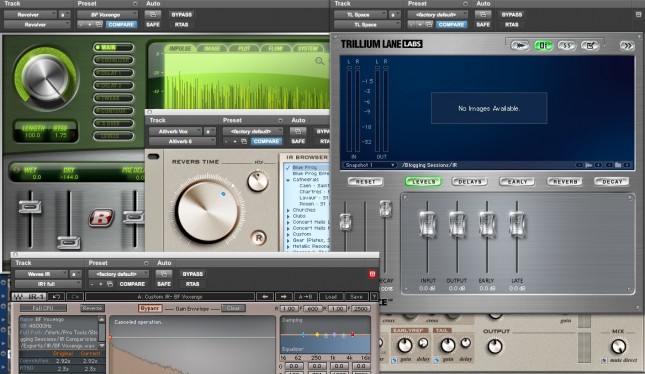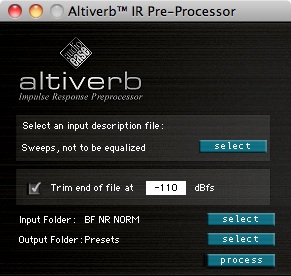I published an article on IR reverb and deconvolution comparisons on my blog. Quite a few people found it useful and Miguel thought it would a good idea to share it with the rest of the community who aren’t on Twitter. If you aren’t on Twitter, join now! The sound community is nothing short of fabulous.
After my previous post on recording and mangling IRs, I decided to find a way to use the sweep I recorded for Altiverb in other convolution reverb plugins. I also thought it would be a good opportunity to compare the sound of these plugins and listen to how differently they deconvolve sweeps. The list of plugins include:
This is not a comparison of their features but of how each one of them sound.
Deconvolution Comparison:
Preparation:
The Altiverb sweep generator produces a sweep with a start and end beep (which it uses for identification). Since most other deconvolution tools don’t recognize these beeps, I created two versions of the sweep – one with the beeps and one without and normalized them to -0.3dBFS. The recorded sweep at the venue also included broadband noise and AC hum, which Altiverb’s processor did a good job of neglecting. The other plugins weren’t as good and included the noise along with the impulse. To make the comparison easier I used some amount of noise reduction on both versions of the recorded sweep.
1. AudioEase Altiverb:
AudioEase’s IR Pre-Processor needs to be used to deconvolve a sweep that is usable in Altiverb. The process is very simple – select a folder with the recorded sweep (make sure they are stereo-split SDII files), an output folder (your Altiverb preset folder), an input description file (in this case, “Sweeps, not to be equalized”) and hit “Process”. Re-scan your IR directory in Altiverb and it should show up.
Here’s what the sweep recorded at the venue for Altiverb sounded like (with beeps, noise reduction and normalization). Make sure you aren’t monitoring too loud:
Continue reading and listening here.

